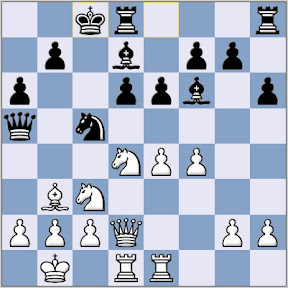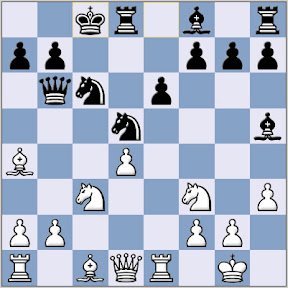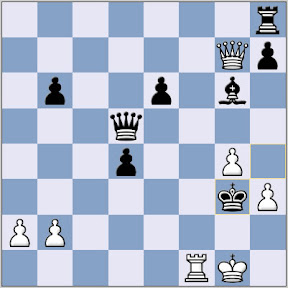There are numerous lines in the Sicilian Defence where White castles on the queenside, Black on the kingside, and attacks then rage on opposite wings of the board.
It's a much rarer sight to see Black castling queenside in the Sicilian, with the c-pawn removed there is little cover for the black king, but that is what Ponomariov tried against Rublevsky:
1 e4 c5; 2 Nf3 d6; 3 d4 cd; 4 Nxd4 Nf6; 5 Nc3 a6; 6 Bc4
This is the move that Nigel Short used in his attempts to bash Garry Kasparov's Najdorf Defence during their World Championship match.
6 ... e6; 7 Bb3 Nbd7; 8 Bg5 Qa5; 9 Qd2 Be7; 10 0-0-0 Nc5; 11 Rhe1 h6; 12 Bxf6 Bxf6; 13 Kb1 Bd7; 14 f4 0-0-0

Ponomariov judged that his king would be safer tucked away on b8, rather than facing the full force on White's attack on the kingside.
I couldn't find any other examples on my databases of queenside castling in this line, although Malcolm Pein in his commentary for TWIC did find a short draw between Kogan and Efimenko after: 14 ... Qc7; 15 Nf3 0-0-0.
Rublevsky continued energetically:
15 Ncb5! Qb6; 16 Nxd6+ Qxd6; 17 e5 Qc7; 18 ef gf
but Ponomariov was able to develop good play against the White king. It'll be interesting to see if they repeat the line.
Scouring my books, I did come across a wild encounter where Latvian GM Igors Rausis, playing Black, also castled queenside in the Sicilian:
Ambroz,J - Rausis,I [B51]
Germany 1989
1.e4 c5 2.Nf3 d6 3.Bb5+ Nc6 4.0-0 Bg4 5.h3 Bh5 6.c3 Qb6 7.Ba4 Nf6 8.Re1 e6 9.d4 cxd4 10.cxd4 d5 11.exd5 Nxd5 12.Nc3 0-0-0?!

With the c-file open, this looks a crazy place to put the king.
13.Bxc6 Qxc6 14.Nxd5 Qxd5 15.g4 Bg6 16.Re5?! Qd7 17.Be3 Bd6 18.Ra5 b6 19.Ne5 Bxe5 20.Rxe5 f6?! 21.Qf3!

White has lost a rook, but has tremendous attacking chances the Black king. Incredibly, in just 14 more moves, the Black king ends up on g3 as the final piece in a mating counter-attack!
21 ... fxe5 22.Qa8+ Kc7 23.Qxa7+ Kd6 24.Qa3+ Kc6 25.Qa6 exd4 26.Rc1+ Kd5 27.Qc4+ Ke5 28.Bg5 Rdf8 29.f4+? [29.Re1+ Be4 30.Qd3 Qc6 31.f3=] 29...Rxf4 30.Bxf4+ Kxf4 31.Qe2 Kg5 32.Qe5+ Kh4 33.Rf1 Qd5 34.Qxg7 [34.Qe1+ Kxh3 35.Rf2 e5-+] 34...Kg3!

35.Qc7+ e5 36.Rf2 Rf8 37.Rd2 Qh1+ 0-1

2 comments:
It's interesting how much we tend to play by general principles e.g. in the Sicilian Black castles on the Kingside. We don't think that there is a different possibility.
I'm just reading "Chess for Zebras" and the title alludes to the idea that if people hear hooves they think of horses - but it could be zebras. It means we should think without being bound by conventional approaches. I hope that makes sense. You have to think about it - it's that sort of book!
Nice article.
What about castling on queenside.net ?
Post a Comment